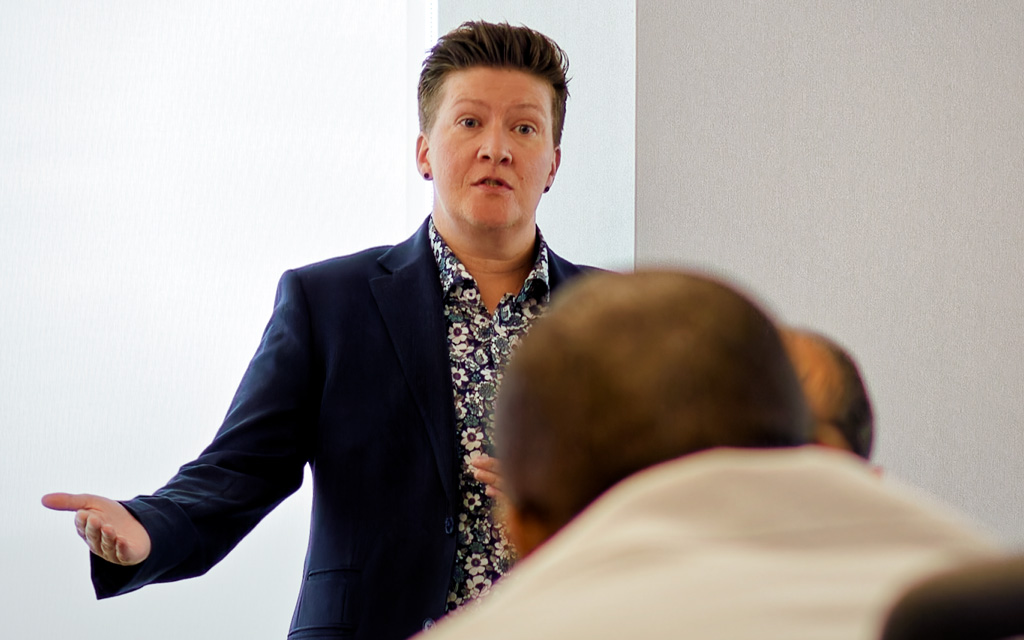New Session: Communicating with 2SLGBTQ+ Patients

Kris Lane, Director of Programs and Allied Health Professionals at the College of Physicians and Surgeons of Nova Scotia, presenting her session Communicating with 2SLGBTQ+ Patients.
The Welcome Collaborative introduced a new session at its September orientation, Communicating with 2SLGBTQ+ Patients. The session was led by Kris Lane, Director of Programs and Allied Health Professionals at the College of Physicians and Surgeons of Nova Scotia and focused on fostering a more inclusive experience for patients who are sexual and gender minorities.
“The session was a response to participant feedback, which highlighted a need for education on sexual and gender minorities. Canada is such an inclusive country when it comes to sexual and gender minorities, and as more people embrace their identities, it’s crucial for healthcare providers to create safe and trusting spaces,” said Lane.
Lane has been a facilitator on equity, diversity and inclusion through a 2SLGBTQ+ lens since 2015. She draws on her experiences with the healthcare system, as both a patient and former paramedic, and sparks important conversations on 2SLGBTQ+ communities in healthcare settings.
“Many healthcare providers that are a part of the Welcome Collaborative come from different backgrounds, and sometimes there is a knowledge gap when it comes to 2SLBTQ+ communities,” Lane explained. “The session aims to address these gaps by providing practical guidance on how to communicate respectfully and effectively with 2SLGBTQ+ patients.”
The session focused on how best physicians can create safe and trusting environments for their patients. Lane shared her personal experience to illustrate the challenges and successes in providing care for sexual and gender minorities.
“I hope participants walk away from the session feeling less afraid of communicating with sexual and gender minorities,” said Lane. “If a healthcare professional, regardless of their discomfort, is able to take each patient as they come and allow each patient to tell their story, it’s an important step forward.”
Additional resources for physicians are available at:
- Welcome Collaborative learning portal
- Welcome Collaborative’s website resources section
- PrideHealth
- World Professional Association for Transgender Health

